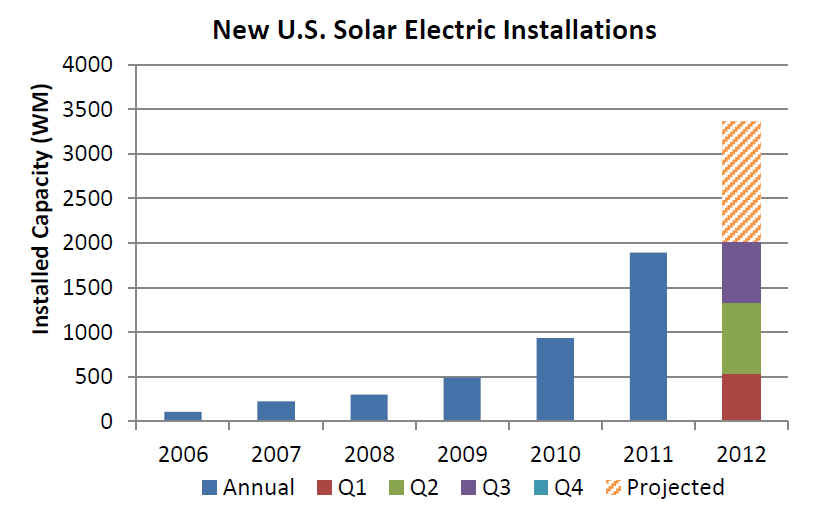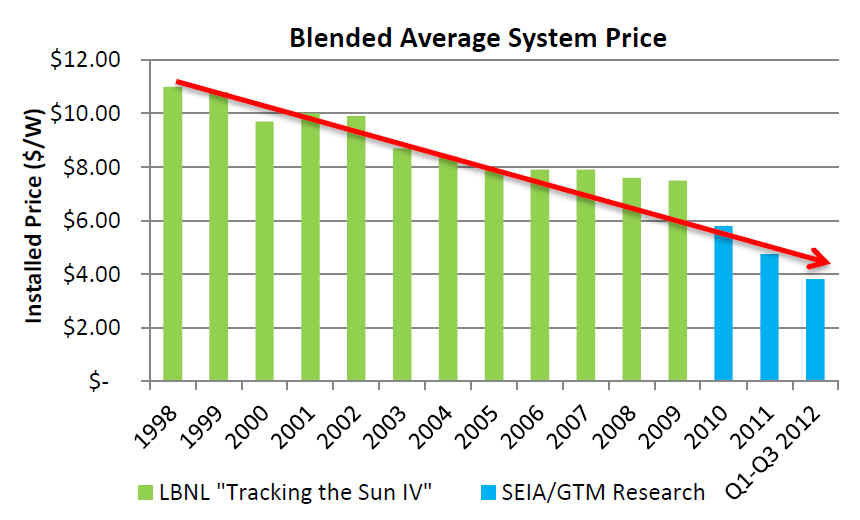Solution Components
- National Smart Grid Underway
- PV for Clean Power
- EV for Clean Transportation
- Smart Home for Smart Grid Support
There are a multitude of paths toward a sustainable, cleaner and more resilient energy future.
Our efforts here at Energy Conscious (EC), are focused on “connecting the dots” of PV / EV / Smart Home technologies. PV or Solar photovoltaic, where the sun powers the home, EV or Electric Vehicle which could also be powered by the sun and finally adding Smart Home capabilities to manage the sizable PV, EV and other home power flows. When all these pieces are in play, this Solar powered Smart Home is clean, sustainable, resilient and becomes what we like to call a “good grid citizen”.
But let’s start with a huge and critically important process that is already well underway… the implementation of a National Smart Grid.
From elsewhere on this site ( Find out more…), we’ve learned that our current electrical grid is;
- dynamically balanced in real-time by vigilant grid operators
- geared more for one way flow of electricity
- not setup to handle intermittent renewable energy sources like Solar and wind
- aging and in much need of a major overhaul
The good news is that if you step back and look at these problems collectively, you find that all of these seemingly independent puzzle pieces fit quite nicely together and in reality represent opportunities that can contribute to a strong integrated solution. Find out more…
Part one of the home energy puzzle… Solar PV for clean electrical power.
Solar power is clean, abundant and available to everyone, everywhere. So why aren’t we doing more with it? The fact of the matter is… we are.

|

|
Solar has been growing by leaps and bounds over the last few years. In large part this growth is attributable to falling PV module prices as shown in the graphics above. The way I read this is, that the financial incentives that have been put in place are doing their job by spurring a growing Solar industry that is starting to achieve economies of scale. As the industry matures, these incentives can be phased out according to a gradual and predictable plan. The key here is gradual and predictable.
I’ve been told never to try to promote Solar on the basis of environmental responsibility… it’s just not good marketing. However, to me, it’s like the elephant in the room… people seem to skirt the issue until after they’ve stepped up. Then they are proud to declare their environmental altruism. Whatever motivation people choose to pursue Solar is a good one to me.
So, putting environmental responsibility aside, what can Solar PV do for me? Here is a short list of benefits… some widely accepted and some that may come as a bit of a surprise;
- Reduced Utility Bills
- Potential to Power an Electric Vehicle (EV)
- Potential to Supply Emergency Power
All of this Solar potential is technically feasible right now. However, there are those that argue that the economic price points for some of these capabilities are not quite there yet. While this might have been true just a short while ago, things are changing quickly. And we at EC are preparing to demonstrate that the time has come to start “connecting the dots”. We are installing a demonstration system that will combine PV, EV and Smart Home technologies to show that not only can they work together, but that together, they can add up to material savings.
Part two of the home energy puzzle… electric vehicles for clean transportation.
Electric vehicles, if widely adopted, could break the back of our dependence on oil. Not only would we no longer need to send troops to secure oil from unfriendly parts of the world, we would be free of the oil companies themselves. Oh, and by the way, we would be cleaning up our air at the same time.
The majority of oil consumption in this country is for transportation. Next would be our use of oil in the manufacturing of key products such as plastics. The irony about our attitude toward oil is this: If oil is a finite resource that was created under unique geologic circumstances millions of years ago… why are we burning it up at an ever increasing rate? Especially when we now have the ability to power a new form of vehicle with alternative energy. Why burn up this critically important resource?
Your Own Gas Station… Imagine having your own gas station at home. And that gas station supplies your vehicle with clean, abundant, free energy from the sun.
Virtually all of the major car makers are introducing some form of Electric Vehicle (EV) from hybrids to plugin hybrids to all electric vehicles. As you can see from the graph below, the total number of EVs sold is growing but at a modest rate. You can also see that some of the dominant models; Nissan Leaf and Chevy Volt can have their ups and downs… remember this graph represents new EV sales each period not the cumulative number of EVs out there. Clearly, the consumer has reservations about EVs and/or a strong case for EV’s has yet to be made. This is in spite of thousands of dollars saved each year as you drive by the gas stations day in and day out. And we all know gas will only continue to go up over time.

What if in addition to saving you thousands each year, your new EV could act as a backup generator supplying enough emergency power to run your home for a day or two. What if it allowed you to participate in grid support markets earning you additional thousands each year. Would that get your attention? Everybody keeps saying “What’s the ROI?… show me the money.” If you really dig into the economics, the money is there… so what’s the hesitation?
Smart Home for Smart Grid Support
Part three of the home energy puzzle… Smart Home to manage it all.
Now we come to the final piece of our sustainable energy puzzle, the Smart Home. We have seen the potential of adding Solar power to our home and even using it to power an EV. However, we need to consider the effect of these sizable new energy flows within the home and their effects on the grid.
First, there is the impact of the grid buffering your intermittent Solar generation. As clouds come and go, your Solar system’s power output can fluctuate quite a bit. This is fine as long as there are not too many Solar systems and they are geographically spread out. But as Solar adoption picks up, we will reach a market penetration limit where something has to give. Some estimates put this at around 15%…. in our opinion we need to be able to move past this artificial barrier.
Second, there is the financial impact on the grid of people generating a good portion of their own power. The utilities have built an electric grid system “for you” and bill you for the service it supplies based on how much electricity you buy. As you generate your own electricity, you are avoiding paying “your share” of the cost of the system. As more and more people go Solar, their share of the costs are moved to those that have not yet converted… is this fair? It is a real issue that needs to be resolved fairly if we are to move forward together.
Not only does Solar have an artificial market penetration limit but so do EV’s… it is called “clustering”. As we’ve described elsewhere, the grid operators are constantly adjusting power generation in real time to accommodate the ups and downs of consumption. For the most part these ups and downs are small and often net each other out. But what if it is a hot summer afternoon and many people arrive home around the same time, crank up their AC and start to cook dinner. This is something the grid operators are typically prepared for.
But all of a sudden, people start to adopt plug in electric vehicles in a big way. Even if the the proper amount of generation can be ramped up… what about your neighborhood power delivery system. It was not designed with all these new EVs in mind.
We have a vision that combines PV / EV and Smart Home technologies to address many of these market penetration barriers…










